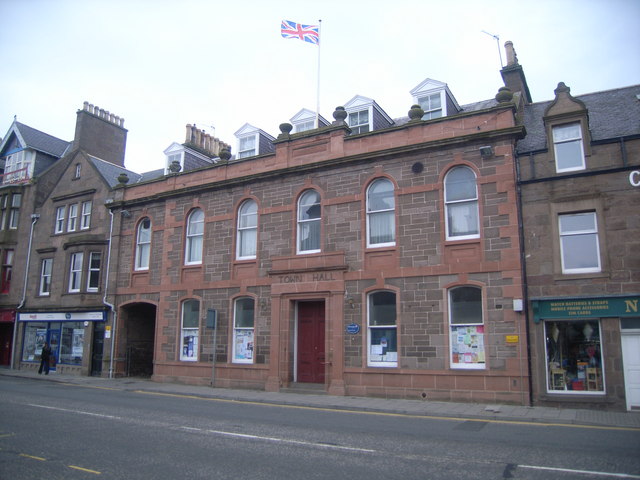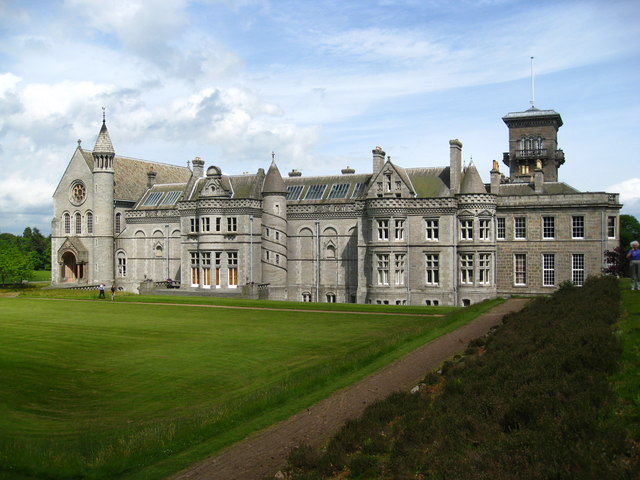|
Stonehaven War Memorial
Stonehaven War Memorial is a war memorial situated on Black Hill overlooking Stonehaven in Scotland. History The memorial was designed by a Stonehaven architect, John Ellis. It was unveiled in May 1923 by Viscountess Cowdray. On 20 May 2023, a rededication ceremony was held to mark 100 years since the structure was unveiled. Structure The structure is octagonal and resembles a ruined temple. It is Category C listed.{{Cite web , title=WAR MEMORIAL, BLACK HILL (LB2918) , url=http://portal.historicenvironment.scot/designation/LB2918 , access-date=2023-05-18 , website=portal.historicenvironment.scot Within the structure is a granite stone with the names of 162 people who died in World War I. After World War II, additional smaller memorial stones were added. References Buildings and structures completed in 1923 World War I memorials in Scotland War Memorial A war memorial is a building, monument, statue, or other edifice to celebrate a war or victo ... [...More Info...] [...Related Items...] OR: [Wikipedia] [Google] [Baidu] |
War Memorial
A war memorial is a building, monument, statue, or other edifice to celebrate a war or victory, or (predominating in modern times) to commemorate those who died or were injured in a war. Symbolism Historical usage It has been suggested that the world's earliest known war memorial is the White Monument at Tell Banat, Aleppo Governorate, Syria, which dates from the 3rd millennium BC and appears to have involved the systematic burial of fighters from a state army. The Nizari Ismaili state, Nizari Ismailis of the Alamut period (the Assassins) had made a secret roll of honor in Alamut Castle containing the names of the assassins and their victims during Nizari–Seljuk conflicts, their uprising. The oldest war memorial in the United Kingdom is Oxford University's All Souls College, Oxford, All Souls College. It was founded in 1438 with the provision that its fellows should pray for those killed in the long wars with France. War memorials for the Franco-Prussi ... [...More Info...] [...Related Items...] OR: [Wikipedia] [Google] [Baidu] |
Stonehaven
Stonehaven ( ) is a town on the northeast coast of Scotland, south of Aberdeen. It had a population of 11,177 at th2022 Census Stonehaven was formerly the county town of Kincardineshire, succeeding the now abandoned town of Kincardine, Aberdeenshire, Kincardine. It is currently administered as part of Aberdeenshire. The town is known in the local Doric Scots, Doric dialect as ''Steenhive'' () and is nicknamed ''Stoney''. Pre-history and archaeology Stonehaven is the site of prehistoric events evidenced by finds at Fetteresso Castle and Neolithic pottery excavations from the Spurryhillock area. In 2004, archaeological work by CFA Archaeology, in advance of the building of the Aberdeen to Lochside Natural Gas Pipeline, found two short Cist, cists burials containing cremated remains to the southwest of Stonehaven. Radiocarbon dating put the burials in the first half of the 2nd millennium BC, which was the Early Bronze Age in Scotland. The burials contained stone tool artifacts ... [...More Info...] [...Related Items...] OR: [Wikipedia] [Google] [Baidu] |
Annie Pearson, Viscountess Cowdray
Annie Pearson, Viscountess Cowdray, GBE (''née'' Cass; 4 June 1860 – 15 April 1932) was an English society hostess, suffragist and philanthropist. She was nicknamed the "Fairy Godmother of Nursing" due to her financial patronage of the Royal College of Nursing and her work to promote district nursing throughout England and Scotland. She served as the President of the Women's Liberal Federation from 1921 until 1923 and was also the Honorary Treasurer of the Liberal Women's Suffrage Union. She was the only woman to hold the office of High Steward of Colchester, serving from 1927 until her death in 1932. Marriage and family Annie Pearson (née Cass) was born in Bradford, West Yorkshire on 4 June 1860 to Sir John Cass, a merchant and landowner from Yorkshire, and Hannah Gamble. In 1881 she married Weetman Pearson, a third generation building contractor and engineer who would run the global engineering firm Pearson and Sons, with major projects in England, Canada, the United ... [...More Info...] [...Related Items...] OR: [Wikipedia] [Google] [Baidu] |
Category C Listed
This is a list of Category A listed buildings in Scotland, which are among the Listed buildings in the United Kingdom, listed buildings of the United Kingdom. For a fuller list, see the pages linked on List of listed buildings in Scotland. Key The organization of the lists in this series is on the same basis as the statutory register. County names are those used in the register, and in the case of Scotland they parallel the Subdivisions of Scotland, current administrative areas. Category A listed buildings in Scotland See also *List of castles in Scotland *List of country houses in the United Kingdom *List of hillforts in Scotland *List of historic sites in Scotland *List of monastic houses in Scotland *List of National Trust for Scotland properties *List of post-war Category A listed buildings in Scotland *Listed buildings in England *Listed buildings in Northern Ireland *Listed buildings in Wales *Lists of listed buildings in Scotland *Signal boxes that are listed buildi ... [...More Info...] [...Related Items...] OR: [Wikipedia] [Google] [Baidu] |
World War I
World War I or the First World War (28 July 1914 – 11 November 1918), also known as the Great War, was a World war, global conflict between two coalitions: the Allies of World War I, Allies (or Entente) and the Central Powers. Fighting took place mainly in European theatre of World War I, Europe and the Middle Eastern theatre of World War I, Middle East, as well as in parts of African theatre of World War I, Africa and the Asian and Pacific theatre of World War I, Asia-Pacific, and in Europe was characterised by trench warfare; the widespread use of Artillery of World War I, artillery, machine guns, and Chemical weapons in World War I, chemical weapons (gas); and the introductions of Tanks in World War I, tanks and Aviation in World War I, aircraft. World War I was one of the List of wars by death toll, deadliest conflicts in history, resulting in an estimated World War I casualties, 10 million military dead and more than 20 million wounded, plus some 10 million civilian de ... [...More Info...] [...Related Items...] OR: [Wikipedia] [Google] [Baidu] |
World War II
World War II or the Second World War (1 September 1939 – 2 September 1945) was a World war, global conflict between two coalitions: the Allies of World War II, Allies and the Axis powers. World War II by country, Nearly all of the world's countries participated, with many nations mobilising all resources in pursuit of total war. Tanks in World War II, Tanks and Air warfare of World War II, aircraft played major roles, enabling the strategic bombing of cities and delivery of the Atomic bombings of Hiroshima and Nagasaki, first and only nuclear weapons ever used in war. World War II is the List of wars by death toll, deadliest conflict in history, causing World War II casualties, the death of 70 to 85 million people, more than half of whom were civilians. Millions died in genocides, including the Holocaust, and by massacres, starvation, and disease. After the Allied victory, Allied-occupied Germany, Germany, Allied-occupied Austria, Austria, Occupation of Japan, Japan, a ... [...More Info...] [...Related Items...] OR: [Wikipedia] [Google] [Baidu] |
Buildings And Structures Completed In 1923
A building or edifice is an enclosed structure with a roof, walls and windows, usually standing permanently in one place, such as a house or factory. Buildings come in a variety of sizes, shapes, and functions, and have been adapted throughout history for numerous factors, from building materials available, to weather conditions, land prices, ground conditions, specific uses, prestige, and aesthetic reasons. To better understand the concept, see ''Nonbuilding structure'' for contrast. Buildings serve several societal needs – occupancy, primarily as shelter from weather, security, living space, privacy, to store belongings, and to comfortably live and work. A building as a shelter represents a physical separation of the human habitat (a place of comfort and safety) from the ''outside'' (a place that may be harsh and harmful at times). buildings have been objects or canvasses of much artistic expression. In recent years, interest in sustainable planning and building practi ... [...More Info...] [...Related Items...] OR: [Wikipedia] [Google] [Baidu] |
World War I Memorials In Scotland
The world is the totality of entities, the whole of reality, or everything that exists. The nature of the world has been conceptualized differently in different fields. Some conceptions see the world as unique, while others talk of a "plurality of worlds". Some treat the world as one simple object, while others analyze the world as a complex made up of parts. In scientific cosmology, the world or universe is commonly defined as "the totality of all space and time; all that is, has been, and will be". Theories of modality talk of possible worlds as complete and consistent ways how things could have been. Phenomenology, starting from the horizon of co-given objects present in the periphery of every experience, defines the world as the biggest horizon, or the "horizon of all horizons". In philosophy of mind, the world is contrasted with the mind as that which is represented by the mind. Theology conceptualizes the world in relation to God, for example, as God's creation, ... [...More Info...] [...Related Items...] OR: [Wikipedia] [Google] [Baidu] |





